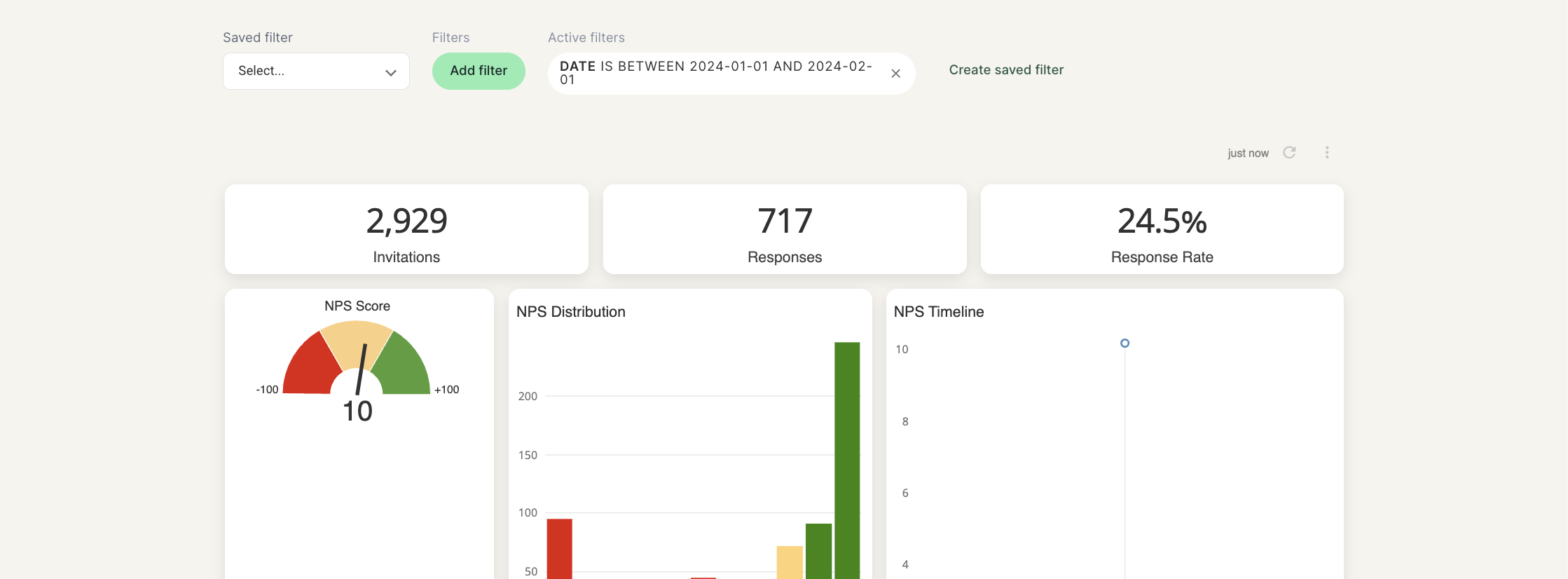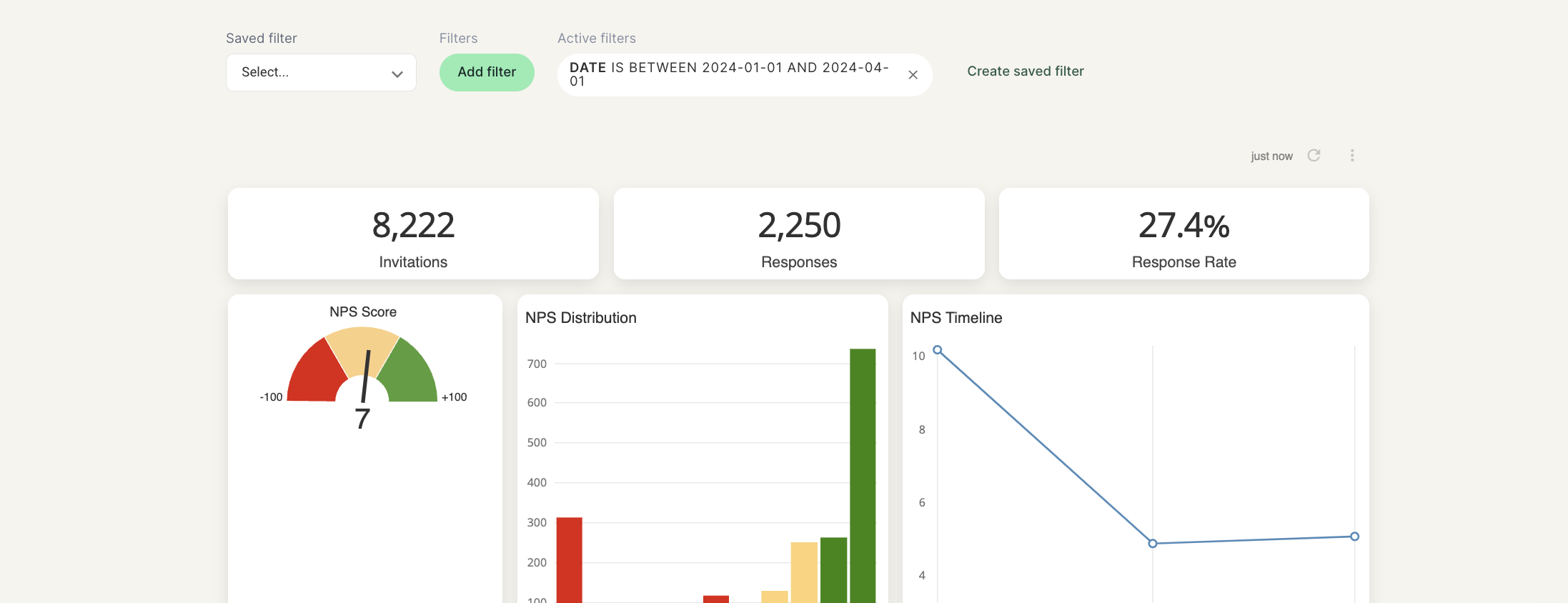How to use filters in the dashboard
How to get the most out of the dashboard by using filters
Filtering your responses allows you to further analyze your survey responses. In Starred, you are able to choose which filters to apply and save ones you are using regularly.
To make filtering through the dashboard easy and efficient, Starred uses expressions and conditions.
Please note: this feature is only available for users with the access rights “Can filter dashboards”
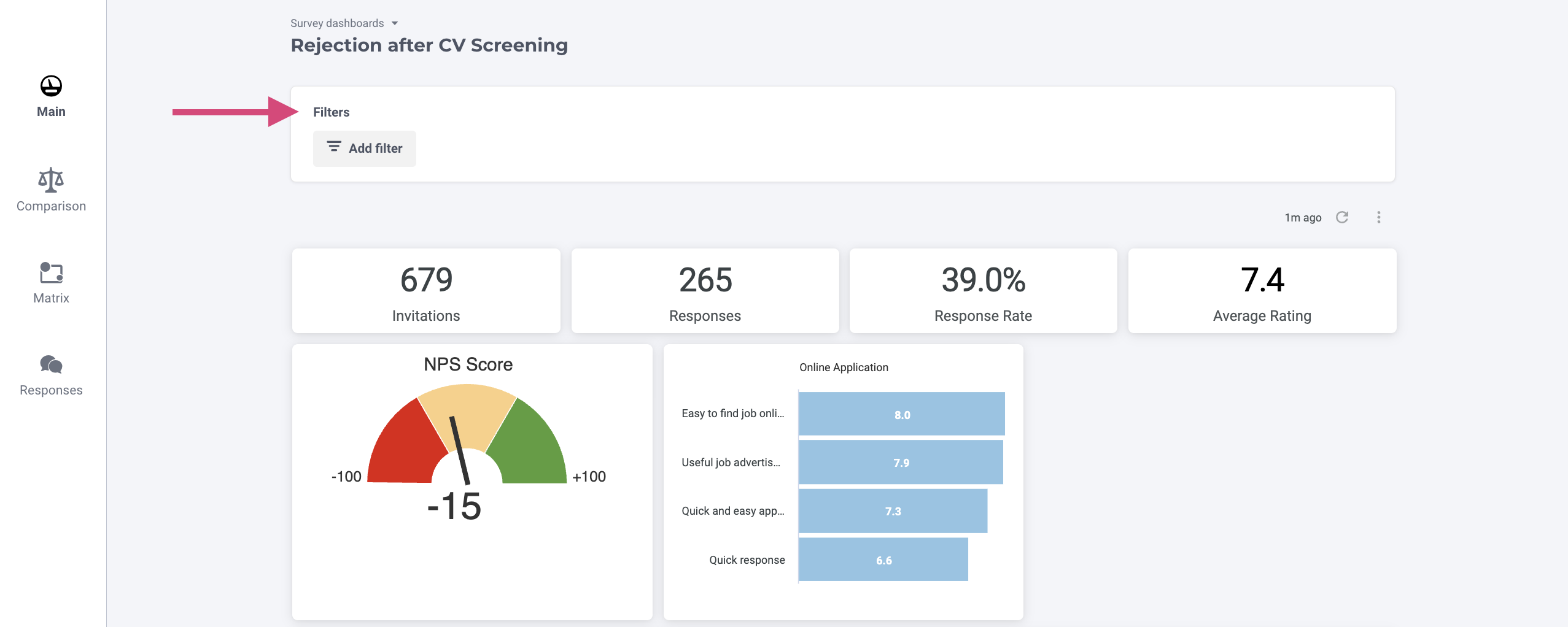
The filters that you’ll be able to use in your dashboard can basically be divided into two categories:
- Filters based on custom fields that you have added to your contacts when you sent them the survey invite. Do the words custom fields sound new to you? If so, head over to our article called "Adding custom fields to respondents” before you continue reading this one. It will make much more sense, we promise!
- Filters that Starred adds automatically to your responses. These include:
- Date
- Journey type
- NPS Category
- source
- Subject
- Survey
- timeToProcess
Let’s take a closer look at some of these.
Date filter
By default, when responses start coming in, they will be attached to a certain date. Starred takes this information and allows you to use both the invitation date as the response date as a filter in your dashboard to look at your results over time.
The Starred “Invitation Date” and “Response Date” filters work based on the following expressions:
- In
- Is
- Is before
- Is after
- Is between
- Is empty
- Is not empty
Let’s make a few examples.
Date “in”
When you select the expression “in” with a Date filter, you’re able to choose between a few options such as last 30 days, last month, this quarter and so on.
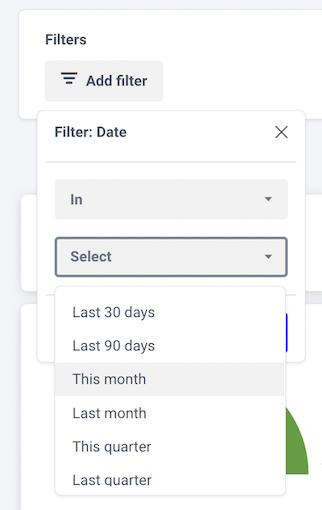
Date “is”, “is before”, “is after”
When choosing the expressions “in”, “is before”, “is after” with a Date filter, you’re able to view responses based on a specific date.
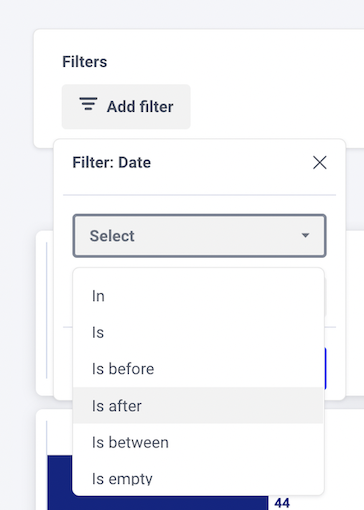
Date “is between”
If you want to see responses that have been sent between two specific dates, this would be your chosen filter to use.
Please noteDate is between[day] and [day] filters from the 1st day you select (included) to the last day you select (not included).
If you want to use this filter for an entire month or quarter, the last day of the range should be the day after the last one that should be included.
Examples:
- The filter for the whole month of January 2024, you should select is between 01-01-2024 and 02-01-2024.
- To filter for the entire first quarter of 2024, you should select is between 01-01-2024 and 04-01-2024.
Date “is empty”, “is not empty”
You won’t really use it with the “Date” filter as every response will be attached to a date, but this expression will be useful with other filters you might have.
Journey type and survey filters
With these two filters, you can filter out responses based on the journey type, to which the surveys are liked, or directly based on the survey.
This is useful when analyzing data from your role-based dashboards (only for Candidate Experience accounts!) or bespoke dashboards.
The main difference between filtering on journey type or survey is that more surveys could be linked to one journey type, so by selecting the journey type you're automatically selecting all surveys linked to that journey type.
For instance, you can filter to only see results from your candidates from the rejected after interview journey type, but you might have more surveys under the "interview" umbrella.
Thanks to Starred's filtering conditions, though, you can still select multiple surveys when using the survey filter.
NPS category
If you have included the NPS question in your survey, you can filter through your dashboard based on the NPS scores given by your respondents.
The NPS filter lets you select data relating to your Detractors, Passives and Promoters so you can have a better understanding of what the different respondent groups think of you.
Subject filter
With this one, you can choose which questions to analyze in your dashboard.
As an example, in your Recruiter Performance dashboard, which is part of your role-based dashboard, you can use the Subject filter to only view ratings for questions that relate to a recruiter's actual performance and exclude questions around aspects of your recruitment process that are not under the recruiter's responsibility.
An example of this would be filtering by subjects like "Screening", "Scheduling of Interviews" or "Feedback" and leaving out subjects like "Career Site" and "Job description".
Your company’s filters
If you have used custom fields (e.g. Department, RecruiterName, Location, etc.) when inviting your contacts, they can also be used as filters to dive deeper into the data.
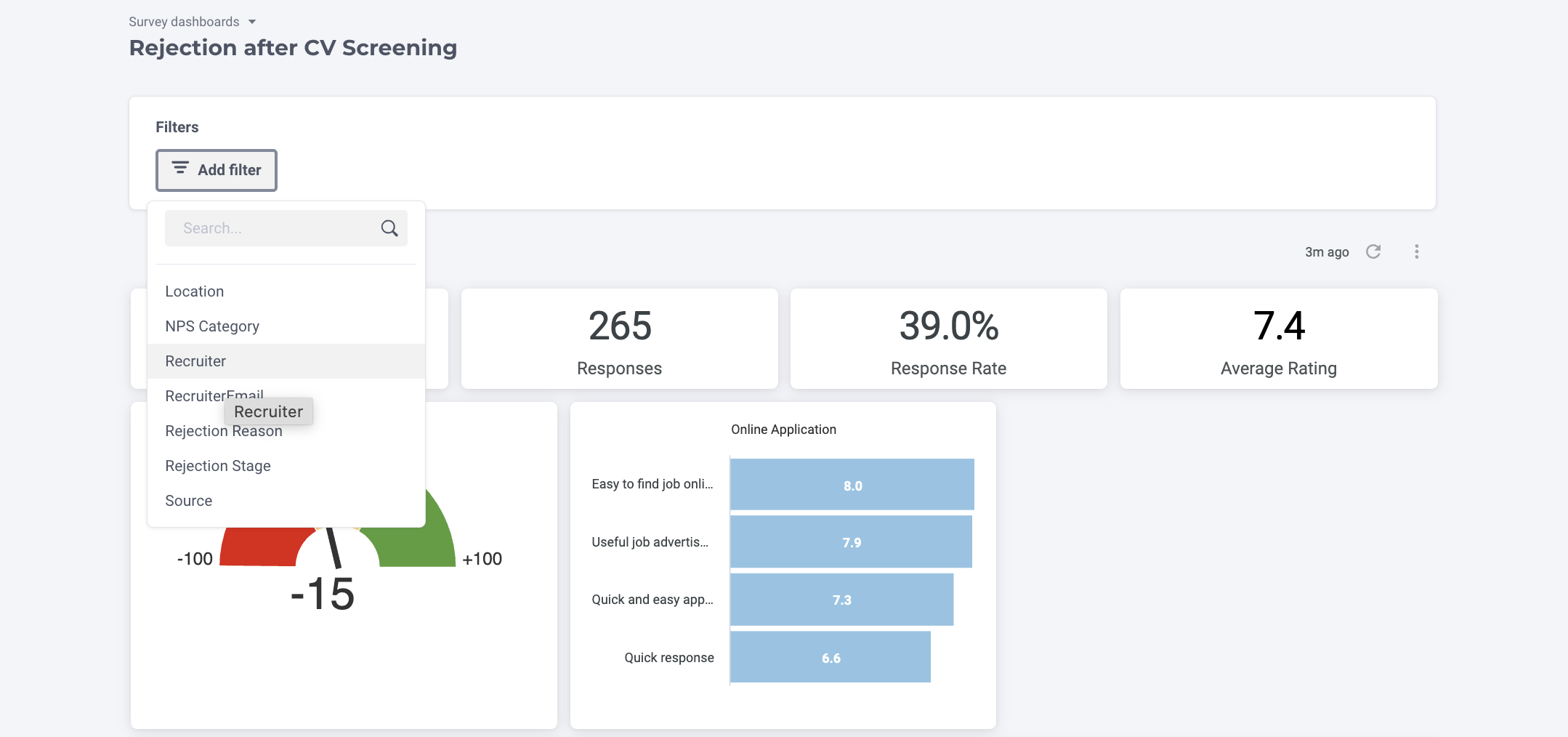
These filters are based on the following expressions:
- Is any of
- Is not any of
- Contains
- Does not contain
- Is empty
- Is not empty
Let’s look at one example: in this case we have selected the custom field Department, chosen the expression is any of and selected the departments we want displayed, namely Finance, Treasury and Accounting.

To remove the filter, you can click on the “x” button next to it.
Please note: Starred will store your active filters up to a day. If within a day you return to the same survey dashboard (that includes also other views, such as the Comparison dashboard or the Priority Matrix), Starred will re-apply the same filters you had previously.
Updated 3 months ago

